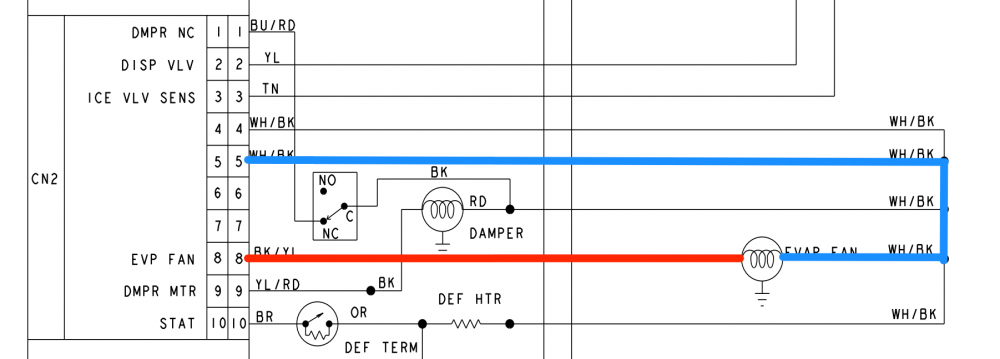The Schematic or the Written Directions -- Which Should You Trust?
We techs rely on accurate technical documentation to do our jobs. You can't make a troubleshooting plan or make meaningful electrical measurements without a good schematic. But what do you do when your technical info contradicts itself?
Let's take a look at this Whirlpool refrigerator, specifically focusing on the evaporator fan. Here it is on the schematic, marked up for your viewing pleasure:
Looks like a standard 120 VAC fan motor. But now, let's take a look at some of the written directions elsewhere in this same tech sheet. These are the instructions for the evaporator fan's step in diagnostic mode.
A two-speed fan? That runs on DC power? That's not what we saw on the schematic...
We need a second opinion. Fortunately, we've also got some specs in this same tech sheet, and these agree with the schematic. Not only do they show that this is a 120 VAC fan motor (yes, yes, I know it says 115, but we use nominal 120 nowadays), but they also show only a single speed.
If this truly were a variable speed fan, they wouldn't give us a single RPM spec like this. We're not dealing with a two-speed DC fan motor here -- just a standard 120 VAC one.
Moral of the story: If you see a conflict between the schematic and the written directions, go with the schematic. Now, don't take this as gospel, but as a rule of thumb. Schematics can have errors, too -- I've written blog posts about them -- but generally speaking, manufacturers make fewer errors when drafting their schematics compared to writing out directions.
Written directions like the ones that gave us the bad spec above are what we technical-minded folks like to call dummy directions. Always take them with a grain of salt, and if they conflict with the schematic, odds are they're flat-out wrong. This does not mean that you don't bother to read through them -- it just means that you use your discernment and technical knowledge when you do so.
Want to learn how to read technical docs with confidence and attain complete troubleshooting mastery? Click here to check out the online Core appliance repair training course over at the Master Samurai Tech Academy.
-
.png) 8
8

.png.9012a87f3d9d47f1728530e9414b5964.png)





10 Comments
Recommended Comments